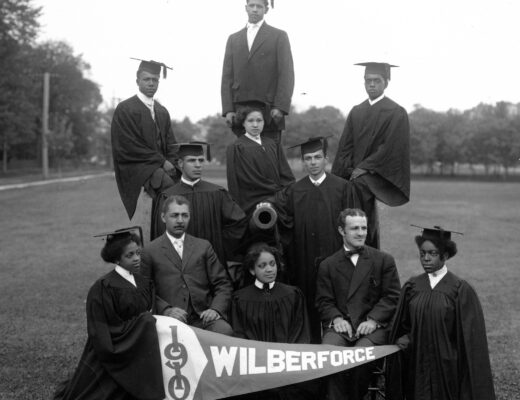The Emancipation Oak stands near the entrance of the Hampton University campus and is a lasting symbol of the university’s rich heritage and perseverance.
During the Civil War, Union General Benjamin F. Butler’s “contraband of war” decision at Fort Monroe in 1861 changed the fates of many African-American slaves, enabling hundreds to reach freedom behind Union lines. Although previously forbidden an education by Virginia law, the rising number of “contrabands” camped in the area prompted the establishment of schools for those freedmen who exhibited “a great thirst for knowledge”.
The peaceful shade of the young oak served as the first classroom for newly freed men and women, eager for an education. Mrs. Mary Peake, daughter of a freed colored woman and a Frenchman, conducted the first lessons taught under the oak located on the University’s campus. Classes continued with the The Butler School, which was constructed in 1863 next to the oak.
Perhaps the most moving event of all took place in 1863. Under the tree, the first southern reading of Abraham Lincoln’s Emancipation Proclamation took place. The Emancipation Proclamation was nothing short of monumental, especially considering what it meant for the education of African Americans in Virginia. In 1868, a school was founded by the American Missionary Association. Among its students was Booker T. Washington, who would continue to become a famous educator, speaker, and presidential advisor.
With limbs sprawling over a hundred feet in diameter, the Emancipation oak is designated as one of the 10 Great Trees of the World by the National Geographic Society. The branches of this tree have born witness to countless historical events, many of which symbolized freedom and education. Visiting the oak tree today is nothing short of moving.
Sources:
onlyinyourstate.com
Hampton University





No Comments